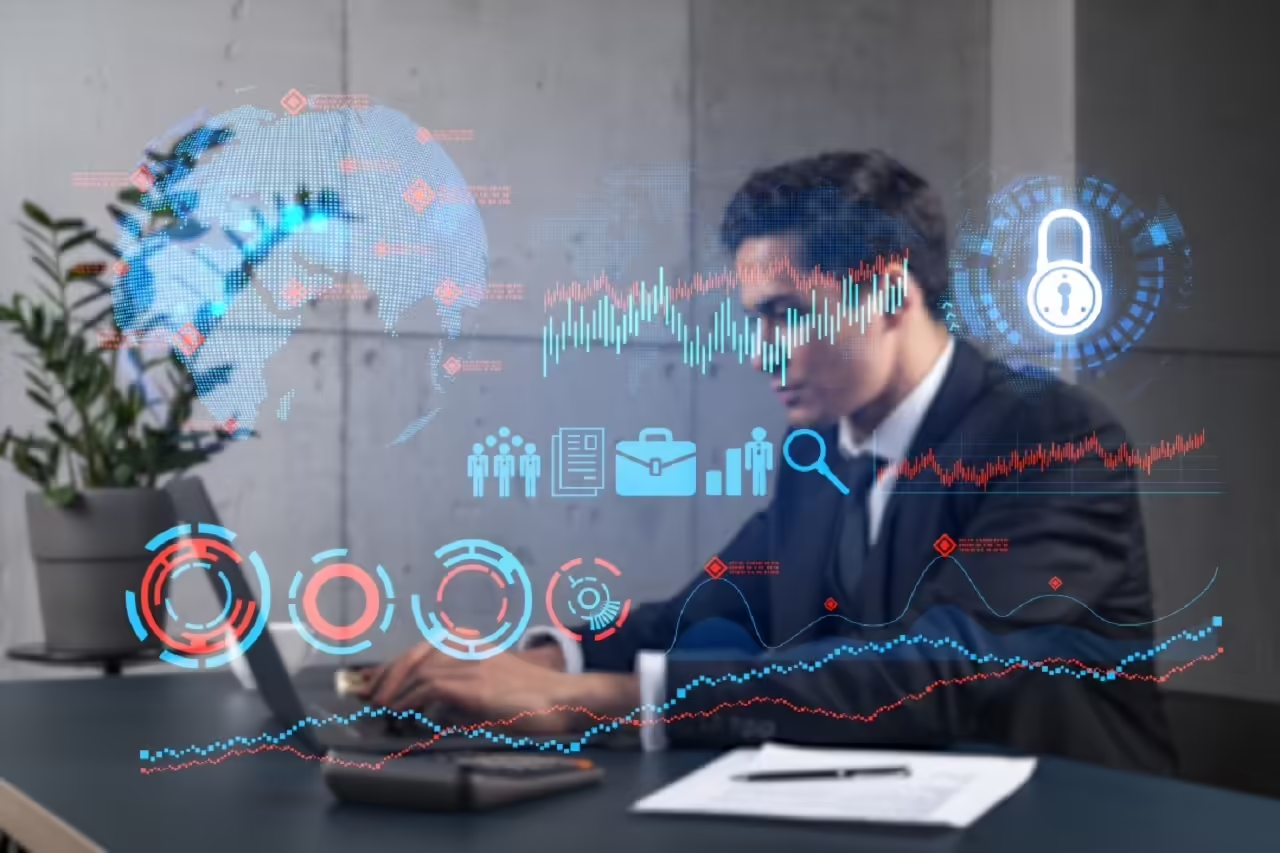What is the Boomerang Effect in AI?
Artificial intelligence (AI) has revolutionized many aspects of our lives, from how we interact with technology to how critical decisions are made across various industries. However, as AI becomes an omnipresent tool, new challenges and risks arise that require attention. One of these emerging challenges is the “boomerang effect,” a phenomenon that could have significant consequences for the future of technology.
The boomerang effect in AI refers to a situation where artificial intelligence models are repeatedly trained with their own generated data, rather than using new and varied data. This process can lead to a negative feedback loop, where the model starts to reflect and amplify its own errors and biases, rather than improving its accuracy and effectiveness. In other words, continuous training with self-generated data can cause the AI to become increasingly inaccurate and biased.
The Importance of Training with Diverse Data
To fully understand the impact of the boomerang effect, it is crucial to recognize the importance of diverse data in training AI models. Artificial intelligence models learn from the data they are trained on. The more varied and representative these data are, the more capable the models will be of making accurate and fair predictions. However, when models are trained with their own data, especially if these data are not representative or contain inherent biases, the result can be an AI that perpetuates and amplifies these biases.
Examples of the Boomerang Effect
A classic example of the boomerang effect in AI is the use of recommendation algorithms on content platforms, such as YouTube or Netflix. If an algorithm continuously recommends content based on the data generated by the user’s previous interactions with the system, it can create a “filter bubble.” This bubble limits the user’s exposure to new types of content, reinforcing their initial preferences and excluding diverse perspectives. Over time, the algorithm becomes less capable of providing varied and balanced recommendations.
Another example is found in the realm of security and surveillance. Facial recognition systems trained predominantly with data from a specific demographic group can become less accurate at identifying individuals from other groups. If these systems are continuously trained with data generated from their own predictions, the initial bias not only persists but can also intensify, leading to serious and potentially discriminatory errors.
The Current Relevance of the Boomerang Effect
Currently, the boomerang effect is an increasingly relevant topic due to the exponential rise in the use of artificial intelligence across multiple sectors. From healthcare to e-commerce, AI is at the heart of technological innovation. However, excessive reliance on self-generated data and a lack of diversity in data sets can jeopardize the effectiveness and fairness of these systems.
Moreover, as regulations on AI use become stricter, companies and developers need to be aware of the risks associated with the boomerang effect. The responsibility for ensuring that AI models are accurate, fair, and transparent rests with those who create and implement them. Ignoring the boomerang effect can lead to legal and ethical consequences, as well as undermine public trust in AI technology.
The Danger of Training AI with Self-Generated Data
In the development of artificial intelligence (AI), the quality and diversity of the data used to train models are fundamental to ensuring their accuracy and fairness. However, there is a significant risk associated with using self-generated data, i.e., data produced by the AI itself during its operation, for subsequent training. This phenomenon, known as the “boomerang effect,” can have serious consequences for the accuracy and impartiality of AI systems.
Understanding the Use of Self-Generated Data
In the context of AI, self-generated data refers to data created as a result of the model’s own decisions and predictions. For example, in a content recommendation system, self-generated data may include clicks and views generated by the algorithm’s own recommendations. In theory, using this data to continuously train and improve the model seems like a good idea, as the system can dynamically adapt to user behaviors and preferences. However, this approach carries several hidden dangers.
Amplification of Errors and Biases
One of the main risks of training AI with self-generated data is the amplification of errors and biases. AI models are not perfect and can make errors in their predictions. If these errors are repeatedly incorporated into the training data set, they can become more pronounced over time. For example, if a facial recognition system incorrectly identifies a person due to a bias in the original data set, and then is trained with data that includes these errors, the bias will be perpetuated and amplified.
Additionally, AI models trained with self-generated data can reflect and reinforce existing biases in the original data. If the initial data used to train the model contain racial, gender, or other biases, these biases can become integrated into the model’s predictions and perpetuated through the continuous use of self-generated data. This not only compromises the model’s accuracy but also raises serious ethical and social concerns.
Negative Feedback Loop
The use of self-generated data can create a negative feedback loop. When a model is trained with its own data, its decisions and predictions directly influence the future data set. This loop can limit the diversity of available training data, making the model less adaptable to new situations and contexts. In a recommendation system, for example, this can lead to a “filter bubble,” where users only see content that reinforces their existing preferences, excluding diverse and new perspectives.
Loss of Generalization
Generalization is the ability of an AI model to apply its knowledge to new and previously unseen situations. Training with self-generated data can reduce the model’s ability to generalize, as self-generated data tends to be more homogeneous and less representative of the variety of cases the model might encounter in the real world. As a result, the model may perform well in situations similar to those it has seen before but fail in different or unexpected scenarios.
Real-World Examples
A notable example of this problem can be seen in voice recognition systems. If a voice recognition model is predominantly trained with data from speakers of a single dialect or accent, it may work very well for that specific group but struggle to understand speakers of other dialects or accents. If the model is continuously trained with self-generated data from this limited group, its ability to generalize to a more diverse population will be compromised.
Another example is found in digital advertising algorithms. If an advertising system is trained with self-generated data based on users’ previous interactions, it can become increasingly specialized in serving ads to a particular subset of the audience, excluding other segments that might also be relevant.
Mitigating Risks
To mitigate the risks associated with training AI with self-generated data, it is essential to adopt several strategies. First, it is crucial to maintain diversity in training data sets by incorporating data from various sources and contexts. Second, developers should implement mechanisms to detect and correct errors and biases in self-generated data before using it for training. Finally, it is important to continuously evaluate the model’s performance in a variety of scenarios to ensure it remains accurate and fair.
Impact on AI Model Performance
Artificial intelligence (AI) has proven to be a powerful tool in a wide range of applications, from medicine to entertainment. However, the effectiveness of AI models largely depends on the quality and diversity of the data with which they are trained. When models are repeatedly trained with their own generated data, they can experience significant performance degradation.
Negative Feedback Loop
Continuous training with self-generated data can create a negative feedback loop, where the model’s errors and biases are perpetuated and amplified with each iteration. This happens because the data generated by the model reflects its previous decisions and predictions, including any inaccuracies or biases present. As this data is used for further training, the model becomes increasingly tuned to these inaccuracies, reducing its ability to make accurate predictions in new contexts.
Fraud Detection Example
Consider an AI system designed to detect fraud in financial transactions. If the model incorrectly identifies certain legitimate transactions as fraudulent, these errors will be incorporated into the self-generated data. When the model is retrained with this data, it will be more likely to classify similar legitimate transactions as fraudulent in the future, leading to a high rate of false positives. This not only degrades the model’s accuracy but can also generate distrust in the system among users and harm innocent customers.
Reduction of Data Diversity
Data diversity is crucial for an AI model’s ability to generalize and adapt to a wide range of situations. Self-generated data tends to be less diverse, as it reflects a specific subset of behavior or context that the model has encountered previously. This lack of diversity limits the model’s exposure to new situations, reducing its ability to adapt and respond appropriately to unknown scenarios.
Recommendation Systems Example
Recommendation systems, such as those used by streaming platforms and e-commerce sites, can be particularly affected by reduced data diversity. If a recommendation system is primarily trained with self-generated data based on past user interactions, it will start to show content or products that reinforce existing preferences. Over time, this can lead to a “filter bubble,” where users only see a limited set of options and are not exposed to new and varied recommendations. This lack of diversity can reduce user satisfaction and limit opportunities for discovering new content or products.
Loss of Generalization
A model’s ability to generalize, i.e., apply what it has learned to new and previously unseen situations, is fundamental to its success. When a model is trained with self-generated data, its generalization ability may be compromised. This is because self-generated data tends to be more homogeneous and less representative of the variety of situations the model might encounter in the real world.
Image Recognition Example
In image recognition, a model trained repeatedly with self-generated images representing only certain types of objects or scenarios may become very accurate in those specific situations but fail to correctly recognize images from different contexts. For example, a model trained only with images of cars in urban settings may struggle to correctly identify cars in rural environments or under different lighting conditions. This loss of generalization limits the model’s applicability and effectiveness in real-world applications.








